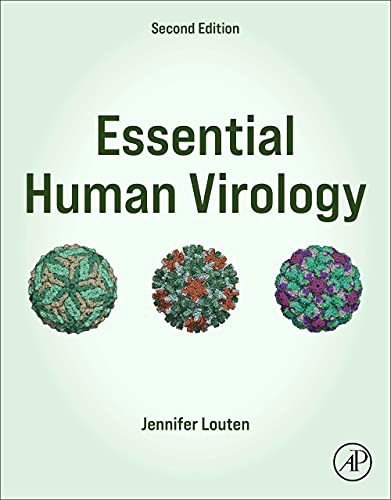

Most ebook files are in PDF format, so you can easily read them using various software such as Foxit Reader or directly on the Google Chrome browser.
Some ebook files are released by publishers in other formats such as .awz, .mobi, .epub, .fb2, etc. You may need to install specific software to read these formats on mobile/PC, such as Calibre.
Please read the tutorial at this link: https://ebookbell.com/faq
We offer FREE conversion to the popular formats you request; however, this may take some time. Therefore, right after payment, please email us, and we will try to provide the service as quickly as possible.
For some exceptional file formats or broken links (if any), please refrain from opening any disputes. Instead, email us first, and we will try to assist within a maximum of 6 hours.
EbookBell Team

4.3
68 reviewsLouten, Jennifer
0 / 0
0 comments
Essential Human Virology, Second Edition is written for the undergraduate level with case studies integrated into each chapter. The structure and classification of viruses will be covered, as well as virus transmission and virus replication strategies based upon type of viral nucleic acid. Several chapters will focus on notable and recognizable viruses and the diseases caused by them, including influenza, HIV, hepatitis viruses, poliovirus, herpesviruses, and emerging and dangerous viruses. Additionally, how viruses cause disease (pathogenesis) will be highlighted during the discussion of each virus family. The book also discusses immune response to viruses, vaccines, anti-viral drugs, gene therapy, the beneficial uses of viruses, research laboratory assays, and viral diagnosis assays. Fully revised and updated with new chapters on coronaviruses, nonliving infectious agents, and notable non-human viruses, the Second Edition of Essential Human Virology will provide students a solid foundation in virology. Focuses on the human diseases and cellular pathology that viruses cause Highlights current and cutting-edge technology and associated issues Presents real case studies and current news highlights in each chapter Features dynamic illustrations, chapter assessment questions, key terms, and summary of concepts, as well as an instructor website with lecture slides, test bank, and recommended activities Updated, revised, and includes new chapters on coronaviruses, nonliving infectious agents, and notable non-human viruses